|
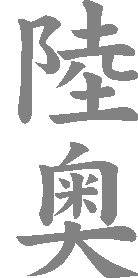
DAIMYO of
MUTSU PROVINCE
Ando
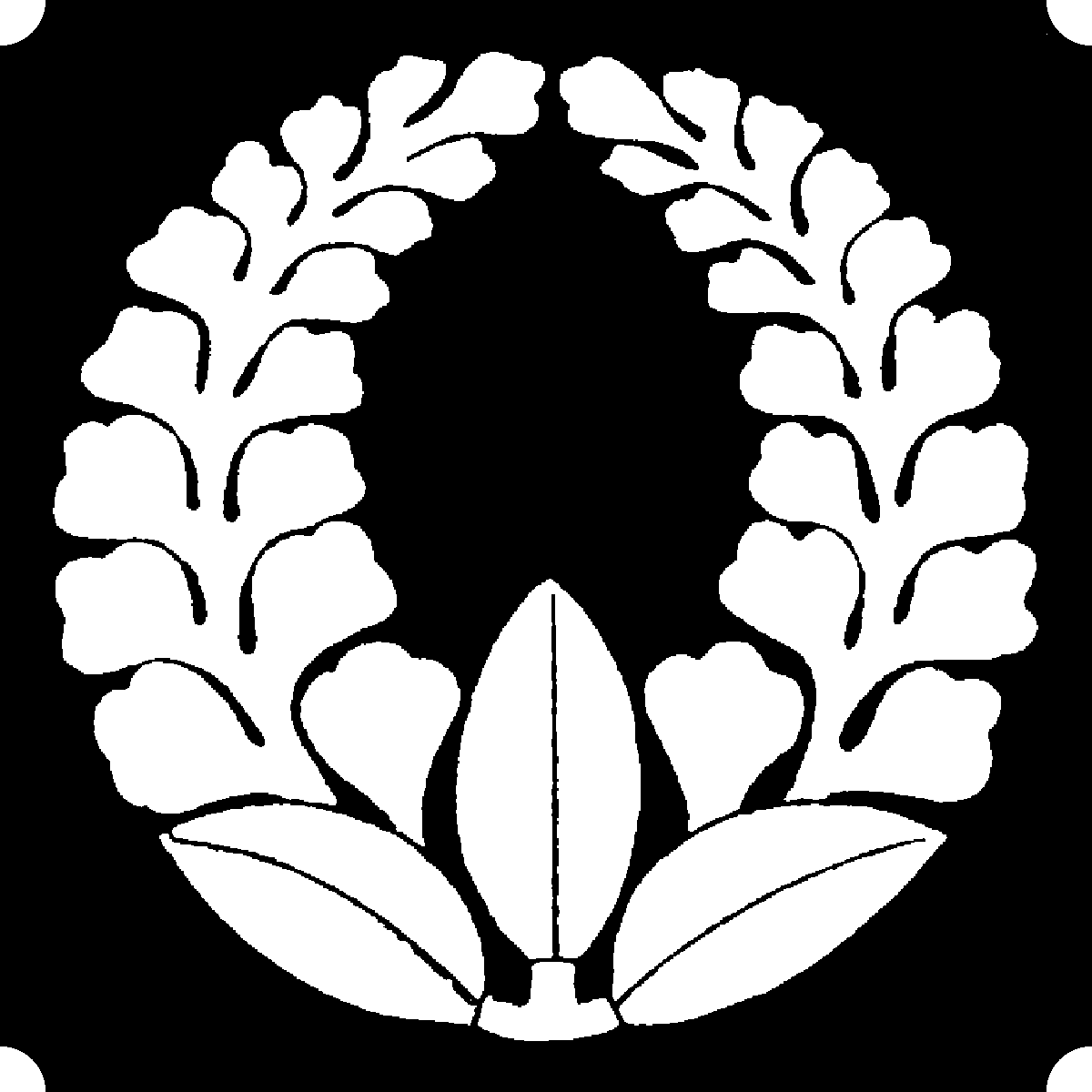

- Domain: Iwakidaira
- Stipend: 67,000 koku
- Class: Fudai 4
- Headquarters: Iwakidaira Castle
Family of daimyo that originated in Mikawa and descended from Abe no Hirafu
and Abe no Nakamaro.
Elder branch.
Succession
- Motoyoshi
- Shigenobu (1558-1622) - Daimyo of Omigawa (16,000 koku); 1st Ando
daimyo of Takasaki (Kozuke -- 56,000 koku)
- Shigenaga (1600-1657)
- Shigehiro - 3rd Ando daimyo of Takasaki; 1st Ando daimyo of Matsuyama
(Bitchu -- 65,000 koku)
- Nobutomo - 2nd Ando daimyo of Matsuyama; 1st Ando daimyo of Kano (Mino --
65,000 koku)
- Nobutada
- Nobunari - 3rd Ando daimyo of Kano; 1st Ando daimyo of Iwakidaira
- Nobukiyo
- Nobuyoshi
- Nobuyori
- Nobumasa (1819-1871, daimyo 1847-1862)
- Nobutami (unranked)
- Nobutake
Notable Ancestors
-
Ando
Shigenobu (1558-1622)
Took part in all the wars of Ieyasu, who in 1612 raised him to the rank of
daimyo and bestowed on him the fief of Takasaki (Kozuke).
-
Ando
Shigenaga (1600-1657)
Enjoyed the favor of the Shogun Hidetada and Iemitsu.
His descendants were successively transferred: in 1695 to Matsuyama
(Bitchu); in 1711 to Kano (Mino); in 1756 to Iwakidaira (Mutsu -- 30,000
koku).
-
Ando
Nobumasa (1819-1871)
.jpg)
Tsushima no Kami, was the assistant and afterwards the successor of Ii
Kamon no Kami in concluding the first treaties with foreign powers.
Related Branches
- Cadet branch: Tanabe (Kii -- 28,000 koku)
Sources
Matsudaira (Hoshina)
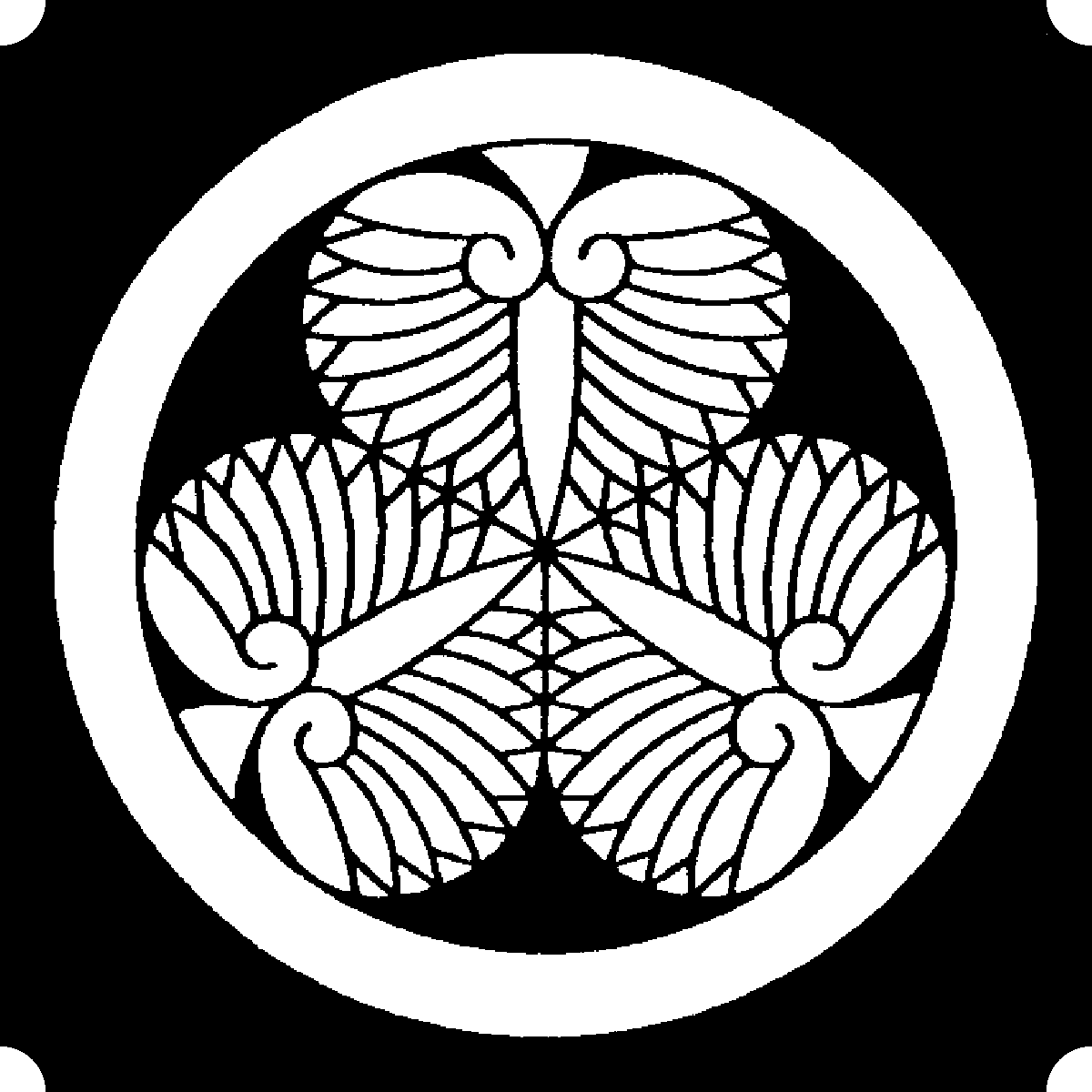

- Domain: Aizu
- Stipend: 230,000 koku
- Class: Shinpan 4
- Headquarters: Aizu Wakamatsu Castle (aka Tsuruga Castle) (Hilltop)
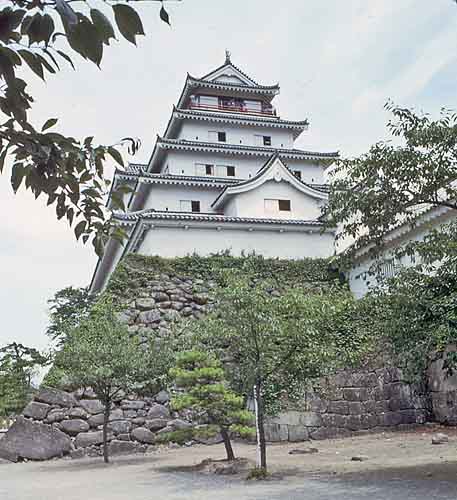
.jpg)
Daimyo family of Mikawa and descended from Minamoto Yorisue (Seiwa-Genji).
Elder branch.
Succession
- Hoshina Masanori
- Hoshina Masatoshi (1509-1593)
- Hoshina Masanao (1542-1601)
- Hoshina Masamitsu (1561-1631) - Daimyo of Tako (Shimosa -- 10,000
koku) (1590-1600); 1st Hoshina daimyo of Takato (Shinano -- 30,000 koku) (1600-1631)
- Masayuki (1609-1672) - 2nd Hoshina daimyo of Takato (1631-1636); daimyo of Yamagata (Dewa -- 200,000 koku) (1636-1643); 1st
Matsudaira daimyo of Aizu (1643-1669)
- Masatsune (daimyo 1669-1681)
- Masakata (daimyo 1681-1731)
- Katasada (daimyo 1731-1750)
- Katanobu (daimyo 1750-1805)
- Kataoki (daimyo 1805)
- Katahiro (1803-1822, daimyo 1806-1822)
- Katataka (1806-1852, daimyo 1822-1852)
- Katamori (1836-1893, daimyo 1852-1868)
- Nobunori (1855-1891, daimyo 1868- )
Notable Ancestors
-
Hoshina
Masanao (1542-1601)
Guarded the castle of Takato (Shinano) for the Takeda. In 1590, Hideyoshi
gave him the little fief of Tako (Shimosa).
-
Hoshina
Masamitsu (1561-1631)
Son of Masanao. After Sekigahara (1600), he received the daimyoate of
Takato (Shinano -- 30,000 koku) from Ieyasu.
-
Matsudaira
Masayuki (1609-1672)
An adopted son of Masamitsu, was in reality the 4th son of the Shogun
Hidetada and a brother of Iemitsu. It was on that account that in 1636, after
the death of Masamitsu, he exchanged the domain of Takato for that of Yamagata
(Dewa -- 200,000 koku). Eight years later, he was transferred to Aizu (Mutsu
-- 230,000 koku). Before dying, Iemitsu entrusted him with the guardianship of
his son Ietsuna. Masayuki is celebrated both as an administrator and a
scholar. He and his successors bore the name of Matsudaira.
-
Matsudaira
Katamori (1836-1893)
.jpg)
.jpg)
Energetic defender of the shogunal power.
Related Branches
- Younger branch: Iino (Kazusa -- 20,000 koku)
Sources
Nanbu
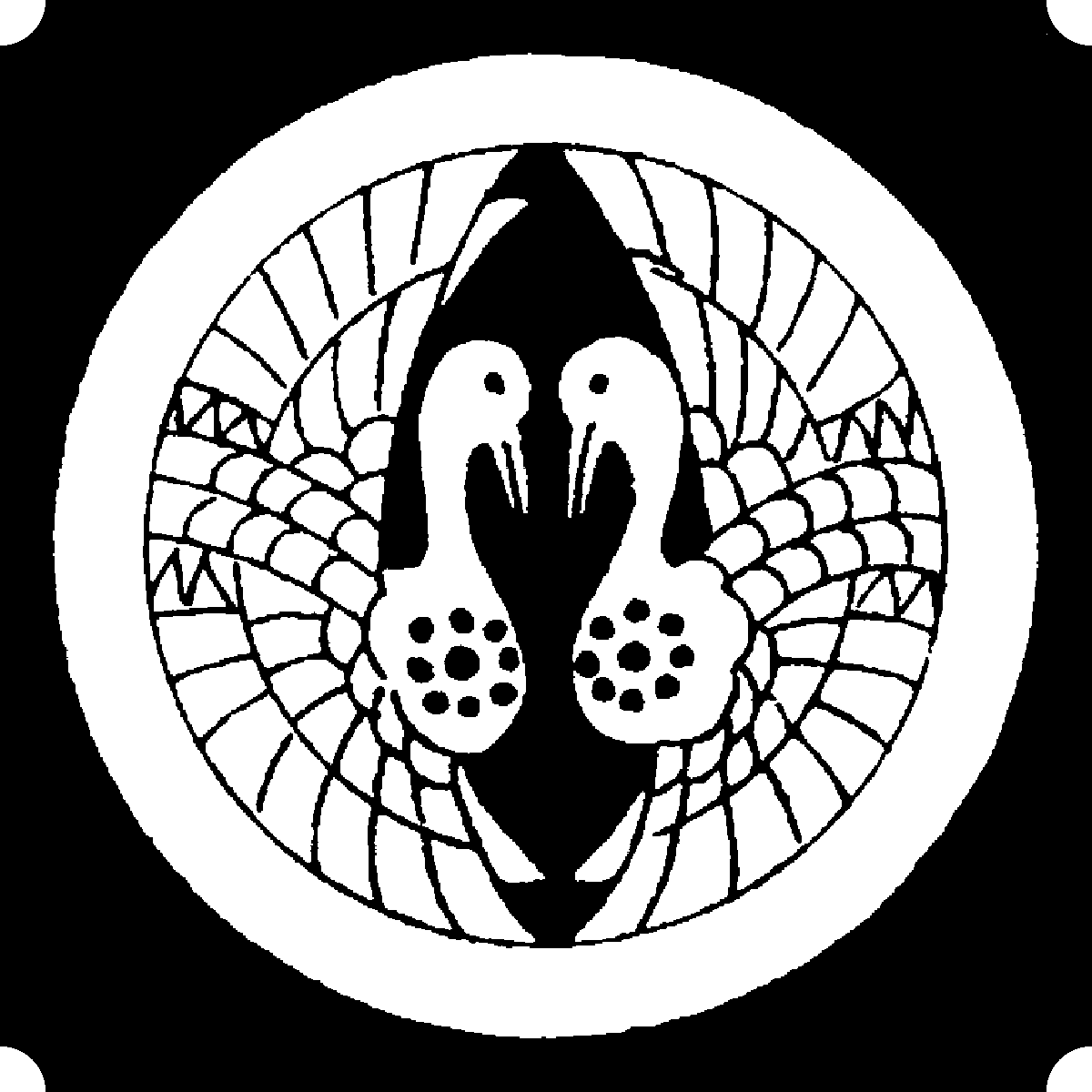

- Domain: Morioka
- Stipend: 100,000 koku (200,000 koku status)
- Class: Tozama 4
- Headquarters: Morioka Castle (Hilltop)
Family of daimyo descended from Takeda Yoshikiyo (Seiwa-Genji).
Eldest branch.
Succession
- Nobunao (1546-1599) - 1st Nanbu daimyo of Morioka
- Toshinao (1576-1632, daimyo 1599-1632)
- Shigenao (1606-1664, daimyo 1632-1664)
- Shigenobu
- Yukinobu
- Nobuoki
- Toshimoto
- Toshimi
- Toshikatsu
- Toshimasa
- Toshitaka
- Toshimochi (A)
- Toshimochi (B)
- Toshitada
- Toshitomo
- Toshihisa
- Tishiyuki
Notable Ancestors
Great-grandson of Yoshikiyo, established himself at Nanbu (Kai) and took that name. After the campaign of Yoritomo against Fujiwara Yasuhira (1189), he received the domain of Sannohe (Mutsu).
-
Nanbu
Nobunao (1546-1599)
.jpg)
Was adopted by his uncle Yasunobu who had no children, and to preserve his domains, he had to war against Kunohe Masazane, who wished to adopt his brother Sanechika. He demanded assistance from Hideyoshi, who sent troops under Hidetsugu, and Masazane was vanquished (1591). The following year, Nobunao accompanied Hideyoshi to Nagoya (Hizen).
-
Nanbu
Toshinao (1576-1632)
Son of Nobunao, constructed the castle of Morioka, where his descendants
lived.
Related Branches
- Branch: Shichinohe (Mutsu -- 11,000 koku)
- Branch: Hachinohe (Mutsu -- 20,000 koku)
Sources
Nanbu


- Domain: Hachinohe
- Stipend: 20,000 koku
- Class: Tozama 5
- Headquarters: Hachinohe Castle
Family of daimyo descended from Takeda Yoshikiyo (Seiwa-Genji).
Branch which from 1664 resided at Hachinohe.
Succession
- Nobunao (1546-1599) - 1st Nanbu daimyo of Morioka
- Toshinao (1576-1632, daimyo 1599-1632)
- Shigenao (1606-1664, daimyo 1632-1664)
- Naofusa - 1st Nanbu daimyo of Hachinohe
- Naomasa
- Michinobu
- Hironobu
- Nobuoki
- Nobuyori
- Nobufusa
- Nobumasa
- Nobuyuki
Notable Ancestors
Great-grandson of Yoshikiyo, established himself at Nanbu (Kai) and took that name. After the campaign of Yoritomo against Fujiwara Yasuhira (1189), he received the domain of Sannohe (Mutsu).
.jpg)
Was adopted by his uncle Yasunobu who had no children, and to preserve his domains, he had to war against Kunohe Masazane, who wished to adopt his brother Sanechika. He demanded assistance from Hideyoshi, who sent troops under Hidetsugu, and Masazane was vanquished (1591). The following year, Nobunao accompanied Hideyoshi to Nagoya (Hizen).
Son of Nobunao, constructed the castle of Morioka, where his descendants
lived.
Related Branches
- Eldest branch: Morioka (Mutsu -- 130,000 koku)
- Branch: Shichinohe (Mutsu -- 11,000 koku)
Sources
Nanbu


- Domain: Shichinohe
- Stipend: 11,000 koku
- Class: Tozama 5
- Headquarters: Shichinohe Castle
Family of daimyo descended from Takeda Yoshikiyo (Seiwa-Genji).
Branch which from 1680 resided at Shichinohe.
Succession
- Nobunao (1546-1599) - 1st Nanbu daimyo of Morioka
- Toshinao (1576-1632, daimyo 1599-1632)
- Shigenao (1606-1664, daimyo 1632-1664)
- Shigenobu
- Masanobu
- Nobumitsu
- ...
- Nobuchika (1776-1821) - 1st Nanbu daimyo of Shichinohe
- Nobunori (1805-1862)
- Nobutami (1833-1900)
- Nobukata (1858-1923)
Notable Ancestors
Great-grandson of Yoshikiyo, established himself at Nanbu (Kai) and took that name. After the campaign of Yoritomo against Fujiwara Yasuhira (1189), he received the domain of Sannohe (Mutsu).
.jpg)
Was adopted by his uncle Yasunobu who had no children, and to preserve his domains, he had to war against Kunohe Masazane, who wished to adopt his brother Sanechika. He demanded assistance from Hideyoshi, who sent troops under Hidetsugu, and Masazane was vanquished (1591). The following year, Nobunao accompanied Hideyoshi to Nagoya (Hizen).
Son of Nobunao, constructed the castle of Morioka, where his descendants
lived.
Related Branches
- Eldest branch: Morioka (Mutsu -- 130,000 koku)
- Branch: Hachinohe (Mutsu -- 20,000 koku)
Sources
Tsugaru
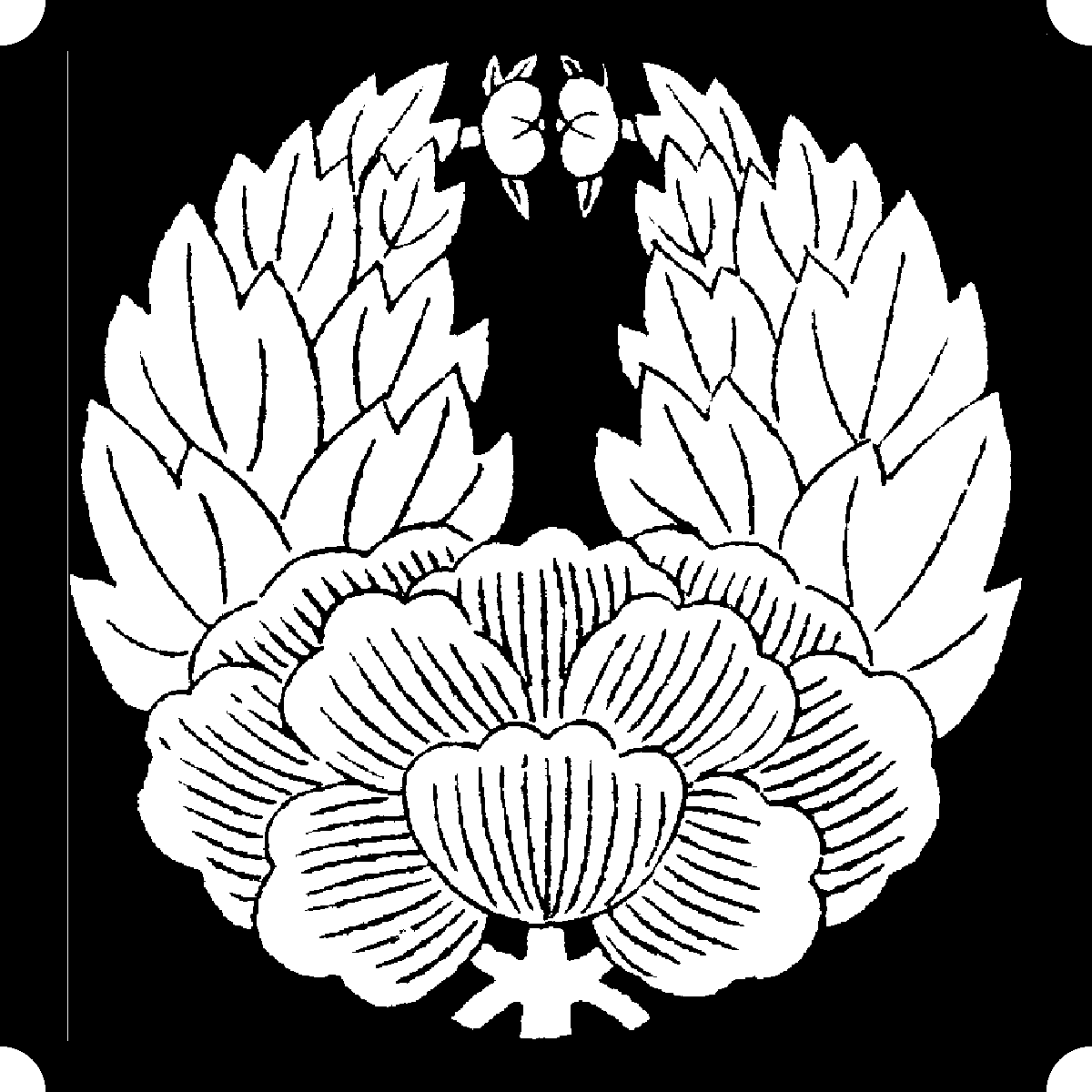

- Domain: Hirosaki
- Stipend: 100,000 koku
- Class: Tozama 4
- Headquarters: Hirosaki Castle (Hilltop)
.jpg)
%20424x599.jpg)
Daimyo family descended from Fujiwara Tadamichi (1097-1154). Was at first
called Kuji, then Oura, and governed the Tsugaru district.
Succession
- Oura Norinobu
- Oura Motonobu
- Oura Mitsunobu (1460-1526)
- Oura Morinobu (1483-1538)
- Tamenobu (1550-1608, daimyo 1590-1607) - 1st Tsugaru daimyo of Hirosaki
- Nobuhira (1586-1631, daimyo 1607-1631)
- Nobuyoshi (1619-1655, daimyo 1631-1655)
- Nobumasa (1646-1710, daimyo 1656-1710)
- Nobuhisa (1669-1746, daimyo 1710-1731)
- Nobuaki (1719-1744, daimyo 1731-1744)
- Nobuyasu (1739-1784, daimyo 1744-1784)
- Nobuakira (1762-1791, daiyo 1784-1791)
- Yasuchika (1765-1833, daimyo 1791-1825)
- Nobuyuki (1800-1862, daimyo 1825-1839)
- Yukitsugu (1800-1865, daimyo 1839-1859)
- Tsuguakira (1840-1916, daimyo 1859- )
Notable Ancestors
-
Tsugaru
Tamenobu (1550-1608)
.jpg)
Son of Oura Morinobu, was obliged to defend his domains against Nanbu
Nobunao, who attempted to give them to his brother Masanobu. In 1589, he demanded help from Akita Sanesue, and
gained his cause. He then submitted to Hideyoshi, who in 1590 confirmed in the
possession of his fief and gave him the name of Tsugaru. The same
year, he took part in the campaign against the Hojo of Odawara, and at the
time of the Korean expedition, he accompanied Hideyoshi to Nagoya (Hizen). In
1600, he sided with Ieyasu, who increased his revenues to 47,000 koku.
-
Tsugaru
Nobuhira (1586-1631)
Son of Tamenobu, was baptized in 1596. He succeeded his father, and in 1610
built the castle of Hirosaki, where he lived. At the time of the persecution of
1614, he received many Christians who had been exiled, but later he abandoned
all religion.
-
Tsugaru
Yasuchika (1765-1833)
Descendant of Nobuhira, in 1805 had his revenues raised to 117,000 koku.
-
Tsugaru
Nobuyuki (1800-1862)
In 1808, his revenues were raised to 217,000 koku.
The family continued to reside at Hirosaki.
Related Branches
- Junior branch: Kuroishi (Mutsu -- 10,000 koku)
Sources
Tsugaru


- Domain: Kuroishi
- Stipend: 10,000 koku
- Class: Tozama 5
- Headquarters: Municipal office
Daimyo family descended from Fujiwara Tadamichi (1097-1154). Was at first
called Kuji, then Oura, and governed the Tsugaru district.
Junior branch descended from Nobuhira, in 1814 settled at Kuroishi.
Succession
- Tamenobu (1550-1608, daimyo 1590-1607)
- Nobuhira (1586-1631, daimyo 1607-1631)
- ...
- Nobufusa - 1st Tsugaru daimyo of Kuroishi
- Nobutoshi
- Masatake
- Hisayo
- Akitaka
- Yasuchika
- Tsunetoshi
- Chikataru
- Yukinori
- Tsuguyasu
- Tsufumichi
Notable Ancestors
.jpg)
Son of Oura Morinobu, was obliged to defend his domains against Nanbu
Nobunao, who attempted to give them to his brother Masanobu. In 1589, he demanded help from Akita Sanesue, and
gained his cause. He then submitted to Hideyoshi, who in 1590 confirmed in the
possession of his fief and gave him the name of Tsugaru. The same
year, he took part in the campaign against the Hojo of Odawara, and at the
time of the Korean expedition, he accompanied Hideyoshi to Nagoya (Hizen). In
1600, he sided with Ieyasu, who increased his revenues to 47,000 koku.
Son of Tamenobu, was baptized in 1596. He succeeded his father, and in 1610
built the castle of Hirosaki, where he lived. At the time of the persecution of
1614, he received many Christians who had been exiled, but later he abandoned
all religion.
Related Branches
- Hirosaki (Mutsu -- 100,000 koku)
Sources
Abe
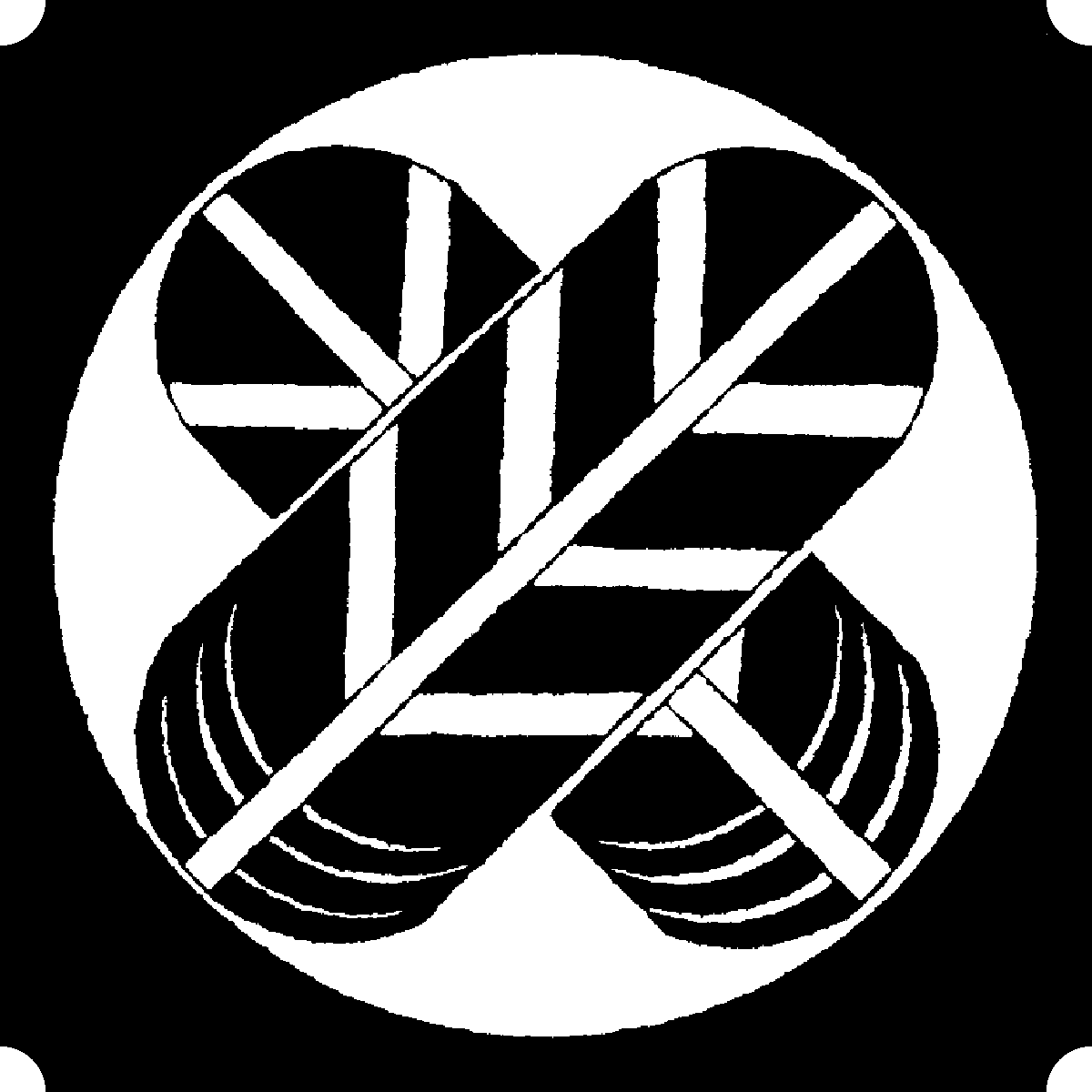

- Domain: Tanakura
- Stipend: 100,000 koku
- Class: Fudai 5
- Headquarters: Tanakura Castle
Family of daimyo originating in Mikawa and descended from Ohiko, a son of
the Emperor Kogen.
This branch settled in 1635 at Mibu (Shimotsuke); in 1639 at Oshi (Musashi);
in 1823 at Shirakawa (Mutsu - 100,000 koku); then from 1866 at Tanakura.
Succession
- Masakatsu (1541-1600)
- Masayoshi
- Tadaaki/Masaaki (1602-1671) - Daimyo of Mibu (Shimotsuke -- 25,000 koku)
(1635-1639); 1st Abe daimyo of Oshi (Musashi -- 100,000 koku) (1639-1671)
- Masayoshi
- Masatake
- Masataka
- Masachika
- Masatoshi
- Masatsune
- Masayoshi (1769-1808, daimyo 1796-1808)
- Masanori - 9th Abe daimyo of Oshi; 1st Abe daimyo of Shirakawa (Mutsu --
100,000 koku)
- Masaatsu
- Masaakira
- Masakata
- Masasada
- Masahisa
- Masato
- Masakiyo - 8th Abe daimyo of Shirakawa; 1st Abe daimyo of Tanakura
- Masakoto
Notable Ancestors
-
Abe
Masakatsu (1541-1600)
Served Ieyasu, and in 1590 received from him a revenue of 5,000 koku at
Ichihara (Izu).
Related Branches
- Elder branch: Fukuyama (Bingo -- 110,000 koku)
- Younger branch: Sanuki (Kazusa -- 16,000 koku)
Sources
Souma


- Domain: Nakamura (aka Souma-Nakamura)
- Stipend: 60,000 koku
- Class: Tozama 5
- Headquarters: Nakamura Castle
Daimyo family descended from Taira Masakado. From 1590 it resided at
Nakamura.
Succession
- Toshitane (1581-1625, daimyo 1602-1625) - 1st Souma daimyo of Nakamura
- Yoshitane (1619-1651, daimyo 1625-1651)
- Tadatane (1637-1673, daimyo 1652-1673)
- Sadatane (1659-1679, daimyo 1673-1697)
- Masatane (1661-1728, daimyo 1679-1701)
- Nobutane (1677-1711, daimyo 1701-1709)
- Takatane (1697-1772, daimyo 1709-1765)
- Morotane (1734-1791, daimyo 1765-1783)
- Yoshitane (1765-1816, daimyo 1783-1801)
- Muratane (1781-1839, daimyo 1801-1813)
- Masutane (1796-1845, daimyo 1813-1835)
- Mitsutane (1819-1887, daimyo 1835-1865)
- Tomotane (1852-1892, daimyo 1865-1871)
Sources
Akita
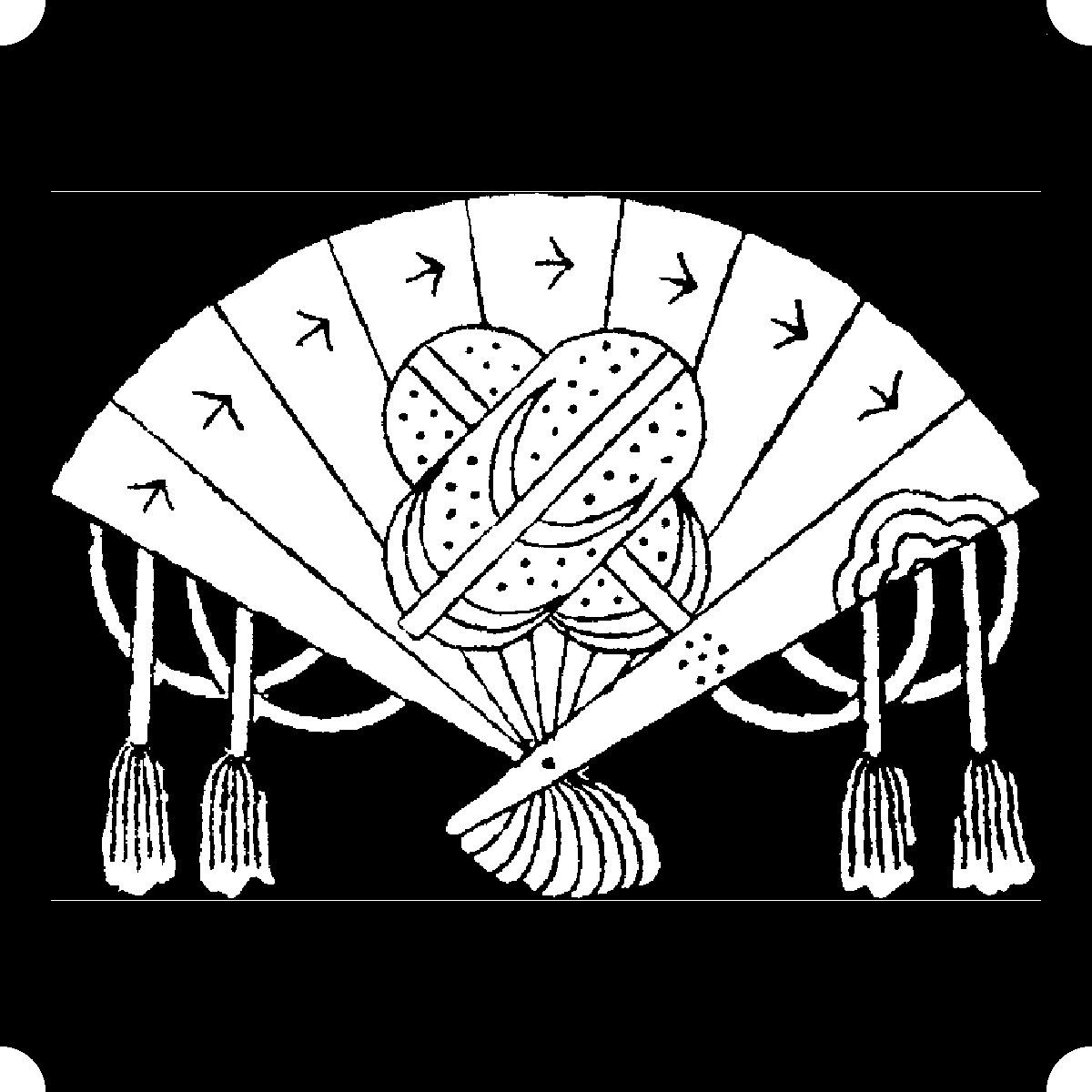

- Domain: Miharu
- Stipend: 50,000 koku
- Class: Tozama, but Fudai status, 5
- Headquarters: Miharu Castle
Family of daimyo descending from Abe no Sadato. From the middle of the 15th
century, they possessed the castle of Akita and the title of Akita no suke.
Succession
- Yoshisue
- Sanesue (1576-1659) - 1st Akita daimyo of Shishido (Hitachi -- 50,000
koku) (1602-1630)
- Toshisue (1598-1649) - 2nd Akita daimyo of Shishido; 1st Akita daimyo of
Miharu (1645-1649)
- Morisue (1620-1676)
- Terusue (1649-1720)
- Yorisue (1696-1743)
- Harusue/Nobusue (1718-1773)
- Sadasue (1726-1757)
- Yukisue/Yoshisue (1751-1813)
- Yasusue/Nagasue (1776-1811)
- Norisue (1786-1844)
- Tomosue (1810-1865)
- Akisue (1858-1907, daimyo 1865- )
Notable Ancestors
-
Akita
Sanesue (1576-1659)
Son of Yoshisue. In
1602; was transferred to Shishido (Hitachi -- 50,000 koku). Later, in 1632, he was banished to Asama (Ise) where he died.
-
Akita
Toshisue (1598-1649)
In 1645, he was appointed to Miharu, where his descendants resided.
Sources
Niwa


- Domain: Nihonmatsu
- Stipend: 100,000 koku
- Class: Tozama 4
- Headquarters: Nihonmatsu Castle (Mountaintop)
Family of daimyo originating in Owari and descended from the Fujiwara.
Succession
- Nagamasa
- Nagahide (1535-1585)
- Nagashige (1571-1637) - Daimyo of Tanakura (Mutsu -- 50,000 koku); 1st Niwa
daimyo of Shirakawa (100,000 koku)
- Mitsushige - 2nd Niwa daimyo of Shirakawa; 1st Niwa daimyo of Nihonmatsu
- Nagatsugu
- Nagayuki
- Hidenobu
- Takahiro
- Takatsune
- Nagataka
- Nagaaki (1780-1813, daimyo 1796-1813)
- Nagatomi (1803-1866, daimyo 1814-1858)
.jpg)
- Nagakuni (1834-1904, daimyo 1858-1868)
.JPG)
- Nagahiro (1859-1886, daimyo 1868- )
.jpg)
Notable Ancestors
-
Niwa
Nagahide (1535-1585)
%20272x598.jpg)
Son of Nagamasa. Served Nobunaga, who made him marry the daughter of his
elder brother Nobuhiro, and,
in 1571, gave him the fief of Sawayama (Omi -- 50,000 koku). He was afterwards,
in 1576, intrusted with the construction of the castle of
Azuchi, and in return received the domain of Obama (Wakasa -- 100,000
koku).
-
Niwa
Nagashige (1571-1637)
%20589x599.jpg)
Son of Nagahide, married, in compliance with Hideyoshi's order, a daughter
of Nobunaga, and, in 1583, took up his abode at Fuchu (Echizen). He succeeded
his father at Obama. In 1598, he was transferred to Komatsu (Kaga -- 100,000
koku) and received the title of Kaga no kami. When the Sekigahara campaign
broke out, he was engaged in a contest with his neighbor, Maeda Toshinaga, and
was rather slow in answering the summons of Ieyasu, who after his victory
dispossessed him and had him closely watched in Edo. However, after several
years, he gave him a revenue of 10,000 koku at Futto (Hitachi). In 1619,
Nagashige received the fief of Izumi (Mutsu -- 20,000 koku); then in 1622,
that of Tanakura (Mutsu -- 50,000 koku).
Son of Nagashige. In 1642 was transferred to Nihonmatsu, where his
descendants resided.
Sources
Itakura
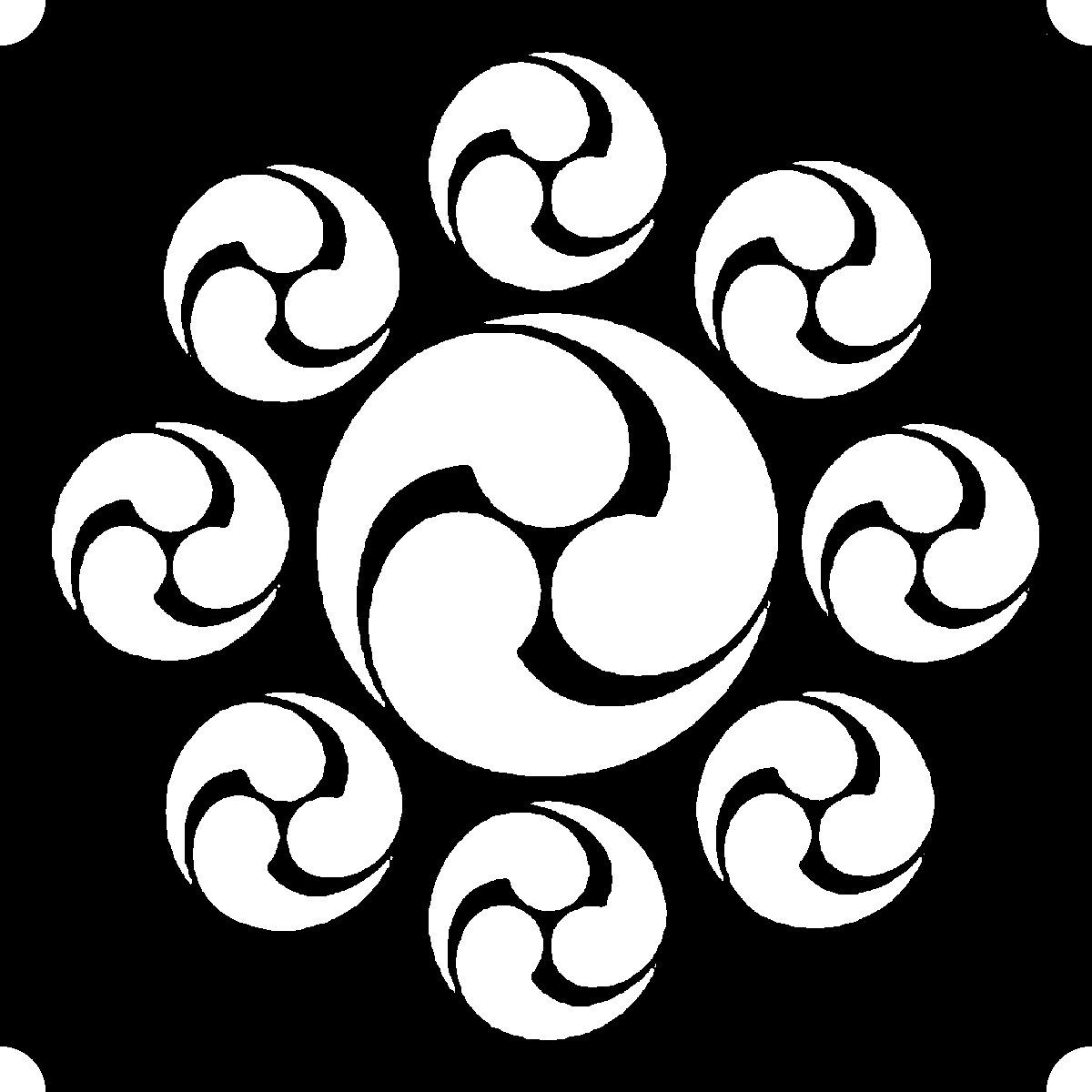

- Domain: Fukushima
- Stipend: 30,000 koku
- Class: Fudai 5
- Headquarters: Fukushima Castle
Daimyo family native of Mikawa and descended from the Seijwa-Genji by the
Shibukawa branch.
Succession
- Katsushige (1542-1624)
- Shigemasa (1588-1638)
- Shigenori (1617-1673)
- Shigetane (1640-1705)
- Shigehiro - 1st Itakura daimyo of Fukushima
- Shigeyasu
- Katsusato
- Katsutsugu
- Katsutou (unranked)
- Katsuyuki
- Katsunori
- Katsunaga
- Katsutoshi
- Katsuteru
- Kastunao
- Kastusato
Notable Ancestors
-
Itakura
Katsushige (1542-1624)
Was a bonze till the age of 40, when he abandoned his profession to follow
the call of Ieyasu, who in 1586 made him Suruga-bugyo, then in 1591, Kanto-daikan. After Sekigara,
in 1601, he became Shoshidai of Kyoto and occupied this
office for 20 years. He received the title of Iga no kami, had his revenues
raised to 40,000 koku, but no castle was confided to him.
-
Itakura
Shigemasa (1588-1638)
2nd son of Katsushige, received a revenue of 15,000 koku in Mikawa for his
conduct during the siege of Osaka (1615). In 1637, he was commissioned
by the Shogun Iemitsu to suppress the Shimabara insurrection (Hizen), and was
killed by an arrow at the siege of the castle of Hara.
-
Itakura
Shigenori (1617-1673)
Son of Shigemasa, he was governor of the castle of Osaka and Roju,
afterwards in 1668, Shoshidai of Kyoto. In 1672, he received the daimyoate of
Karasuyama (Shimotsuke -- 60,000 koku).
-
Itakura
Shigetane (1640-1705)
Son of Shigenori, in 1680 was transferred to Iwatsuki (Musashi), and the
following year to Sakamoto (Shinano). Two years later, he became bonze and
divided his revenues between his son Shigehiro and his brother Shigeyoshi.
Was transferred to Fukushima, where his descendants resided.
Related Branches
- Senior branch: Matsuyama (Bitchu -- 50,000 koku)
- Junior branch: Annaka (Kozuke -- 30,000 koku)
- Junior branch: Niwase (Bitchu -- 20,000 koku)
Sources
Date
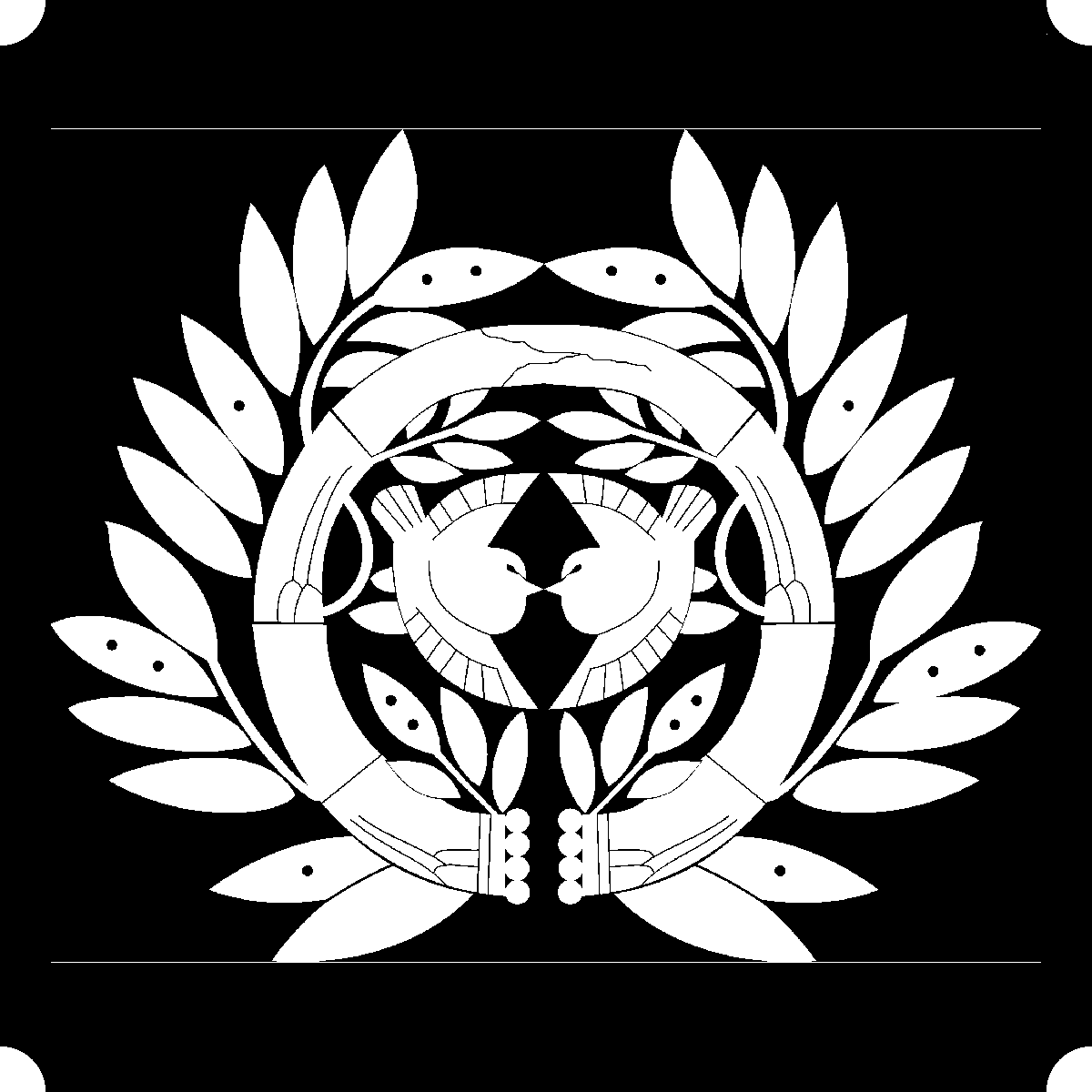

- Domain: Sendai
- Stipend: 625,000 koku
- Class: Tozama 4
- Headquarters: Sendai Castle (Mountaintop)
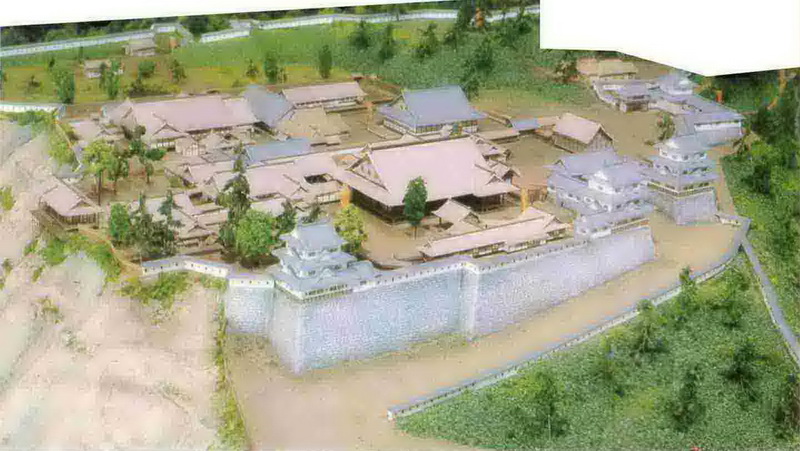
.jpg)
Family of daimyo in Mutsu, descending from the Fujiwara.
Succession
- Terumune (1544-1584)
- Masamune (1566-1636) - 1st Date daimyo of Sendai (1600-1636)
- Tadamune (1600-1658, daimyo 1636-1658)
- Tsunamune (1640-1711, daimyo 1658-1660)
- Tsunamura (1659-1719, daimyo 1660-1703)
- Yoshimura (1680-1752, daimyo 1703-1743)
- Munemura (1718-1756, daimyo 1743-1756)
- Shigemura (1742-1796, daimyo 1756-1790)
- Narimura (1775-1796), daimyo 1790-1796)
- Chikamune (1796-1809, daimyo 1796-1809) (unranked)
- Narimune (1796-1819, daimyo 1809-1819)
- Nariyoshi (1798-1828, daimyo 1819-1827)
- Narikuni (1817-1841, daimyo 1827-1841)
- Yoshikuni (1825-1874, daimyo 1841-1868)
.jpg)
- Munemoto (1866-1917, daimyo 1868- )
- Kunimune (1870-1923)
Notable Ancestors
-
Date
Masamune (1566-1636)
%20800x600.JPG)
.jpg)
Son of Terumune. His father having been killed by Nihonmatsu
Yoshitsugu, Masamune succeeded him at the age of 18, and continued to wage war
against his neighbors to aggrandize his domains. In 1589, he made himself
master of Aizu, domain of the daimyo Ashina, and established his residence at
the Kurokawa castle (Wakamatsu); but the following year, Hideyoshi, having
triumphed over the Odawara Hojo, forced him to be satisfied with the Yonezawa
fief (300,000 koku). At the time of the expedition to Korea, he accompanied
Hideyoshi to Nagoya (Hizen), thence he passed into Korea with Asano Nagamasa.
During his absence, he was accused of being implicated together with the
Kampaku Hidetsugu in a plot against Hideyoshi, but he succeeded in disculpating
himself. In 1600, Ieyasu ordered him to make war against Uesugi Kagekatsu,
and, assisted by Mogami Yoshiteru, he defeated Naoe Kanetsugu. He then
received in fief the 12 districts possessed until then by the Uesugi, and
changed the name of his castle from Iwatezawa to that of Sendai (620,000
koku). He took part in the siege of Osaka (1615), and repelled the troops of
Goto Ujifusa. When the Shogun Hidetada persecuted the Christians at Edo, he
obtained the release of Father Sotelo, who had been arrested. In 1613, called the
latter to Sendai and commissioned him to accompany an embassy he was sending to
the Sovereign Pontiff and to the king of Spain, the embassy being headed by
Hasekura Rokuemon Tsunenaga. Masamune was then said to be favorably
disposed towards the Christians, and even inclined to embrace Christianity,
but fearing to displease the Shogun, he soon changed his dispositions and
became a persecutor. He died at the age of 70, renowned not only as a warrior,
but still more as a diplomat and a protector of artists and scholars.
-
Date
Tadamune (1600-1658)
Son of Masamune. Enjoyed much credit with the Shogun Iemitsu.
-
Date
Tsunamune (1640-1711)
In 1660, having been denounced at Edo on account of the licentiousness of his life,
he was condemned to dig, at his own expense, the moat of the castle of Edo
from Meganebashi to the gate of Ushigome. His descendants resided at Sendai
(620,000 koku).
Related Branches
- Branch (Tamura): Ichinoseki (Mutsu -- 30,000 koku)
- Junior branch: Uwajima (Iyo -- 100,000 koku)
- Branch: Yoshida (Iyo -- 30,000 koku)
Sources
Tamura
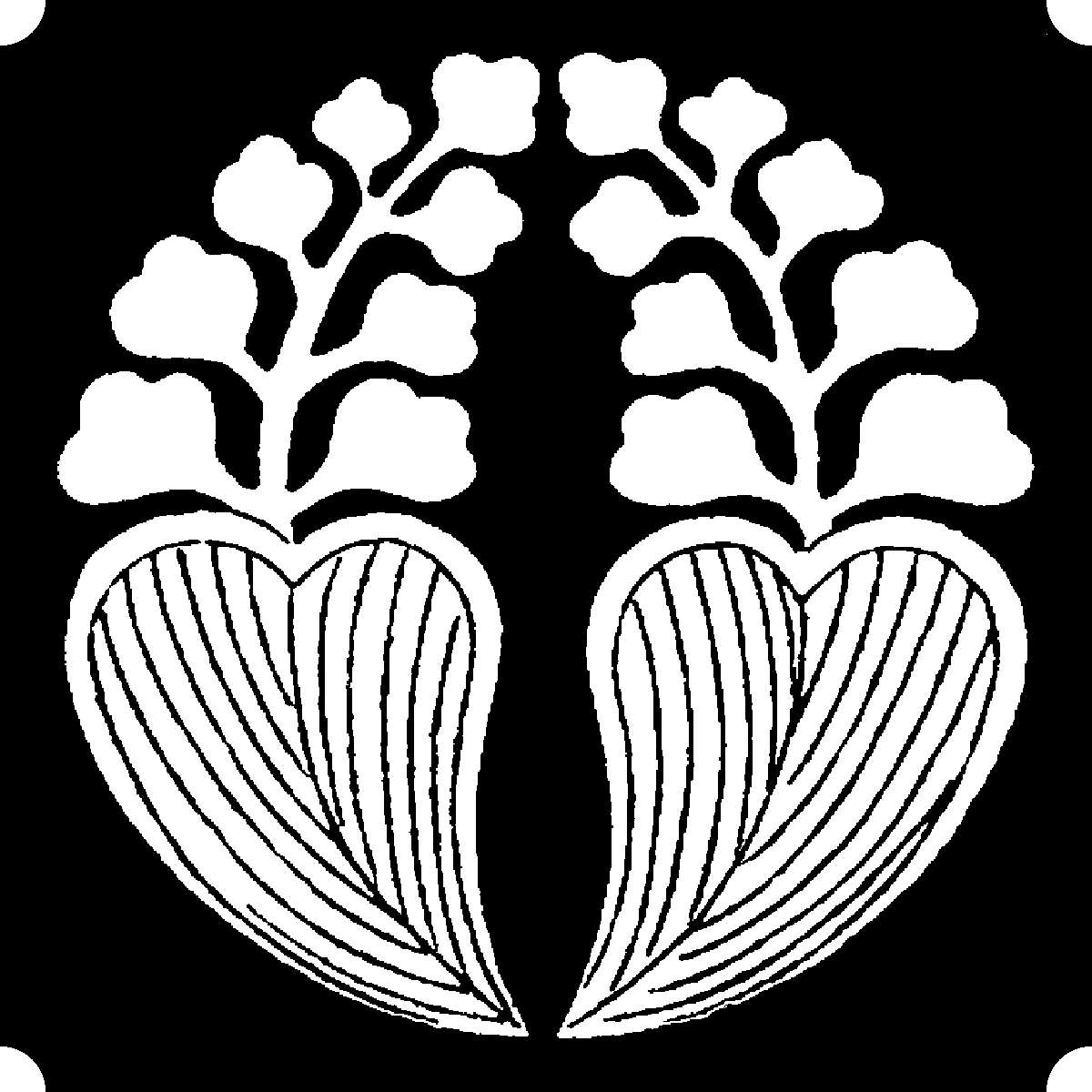

- Domain: Ichinoseki
- Stipend: 30,000 koku
- Class: Tozama 5
- Headquarters: Ichinoseki Castle
Ancient daimyo family of Mutsu descendant from Sakanoe no Tamura-maro. In
1598, Date
Masamune dispossessed it, and some time after, chose his grandson
Muneyoshi (whose mother was a descendant of the Tamura), to perpetuate the
name. In 1695, Tateaki, son of Muneyoshi received the fief of Ichinoseki,
which his descendants kept.
Succession
- Date Terumune (1544-1584)
- Date Masamune (1566-1636) - 1st Date daimyo of Sendai (1600-1636)
- DateTadamune (1600-1658, daimyo 1636-1658)
- Muneyoshi (1637-1678) - 1st Tamura daimyo of Ichinoseki (1660-1678)
- Tateaki (1656-1708)
- Nobuaki (1670-1727)
- Muraaki (1707-1755)
- Murataka (1737-1782)
- Murasuke (1763-1808)
- Muneaki (1784-1827)
- Kuniaki (1817-1840)
- Kuniyuki (1820-1857)
- Yukiaki (1850-1867)
- Kuniyoshi (1852-1887)
- Takaaki (1858-1922)
Notable Ancestors
-
Date
Masamune (1566-1636)
%20800x600.JPG)
.jpg)
Son of Terumune. His father having been killed by Nihonmatsu Yoshitsugu, Masamune succeeded him at the age of 18, and continued to wage war
against his neighbors to aggrandize his domains. In 1589, he made himself
master of Aizu, domain of the daimyo Ashina, and established his residence at
the Kurokawa castle (Wakamatsu); but the following year, Hideyoshi, having
triumphed over the Odawara Hojo, forced him to be satisfied with the Yonezawa
fief (300,000 koku). At the time of the expedition to Korea, he accompanied
Hideyoshi to Nagoya (Hizen), thence he passed into Korea with Asano Nagamasa.
During his absence, he was accused of being implicated together with the
Kampaku Hidetsugu in a plot against Hideyoshi, but he succeeded in disculpating
himself. In 1600, Ieyasu ordered him to make war against Uesugi Kagekatsu,
and, assisted by Mogami Yoshiteru, he defeated Naoe Kanetsugu. He then
received in fief the 12 districts possessed until then by the Uesugi, and
changed the name of his castle from Iwatezawa to that of Sendai (620,000
koku). He took part in the siege of Osaka (1615), and repelled the troops of
Goto Ujifusa. When the Shogun Hidetada persecuted the Christians at Edo, he
obtained the release of Father Sotelo, who had been arrested. In 1613, called the
latter to Sendai and commissioned him to accompany an embassy he was sending to
the Sovereign Pontiff and to the king of Spain, the embassy being headed by
Hasekura Rokuemon Tsunenaga. Masamune was then said to be favorably
disposed towards the Christians, and even inclined to embrace Christianity,
but fearing to displease the Shogun, he soon changed his dispositions and
became a persecutor. He died at the age of 70, renowned not only as a warrior,
but still more as a diplomat and a protector of artists and scholars.
-
Date
Tadamune (1600-1658)
Son of Masamune. Enjoyed much credit with the Shogun Iemitsu.
-
Tamura
Muneyoshi (1637-1678)
2nd son of Date Tadamune, revived the name of Tamura, an ancient family of Mutsu,
which had been dispossessed by Masamune. He established his residence at
Ichinoseki (Mutsu -- 30,000 koku), where his descendants resided.
Related Branches
- Senior branch (Date): Sendai (Mutsu -- 620,000 koku)
- Junior branch (Date): Uwajima (Iyo -- 100,000 koku)
- Branch (Date): Yoshida (Iyo -- 30,000 koku)
Sources
Naito
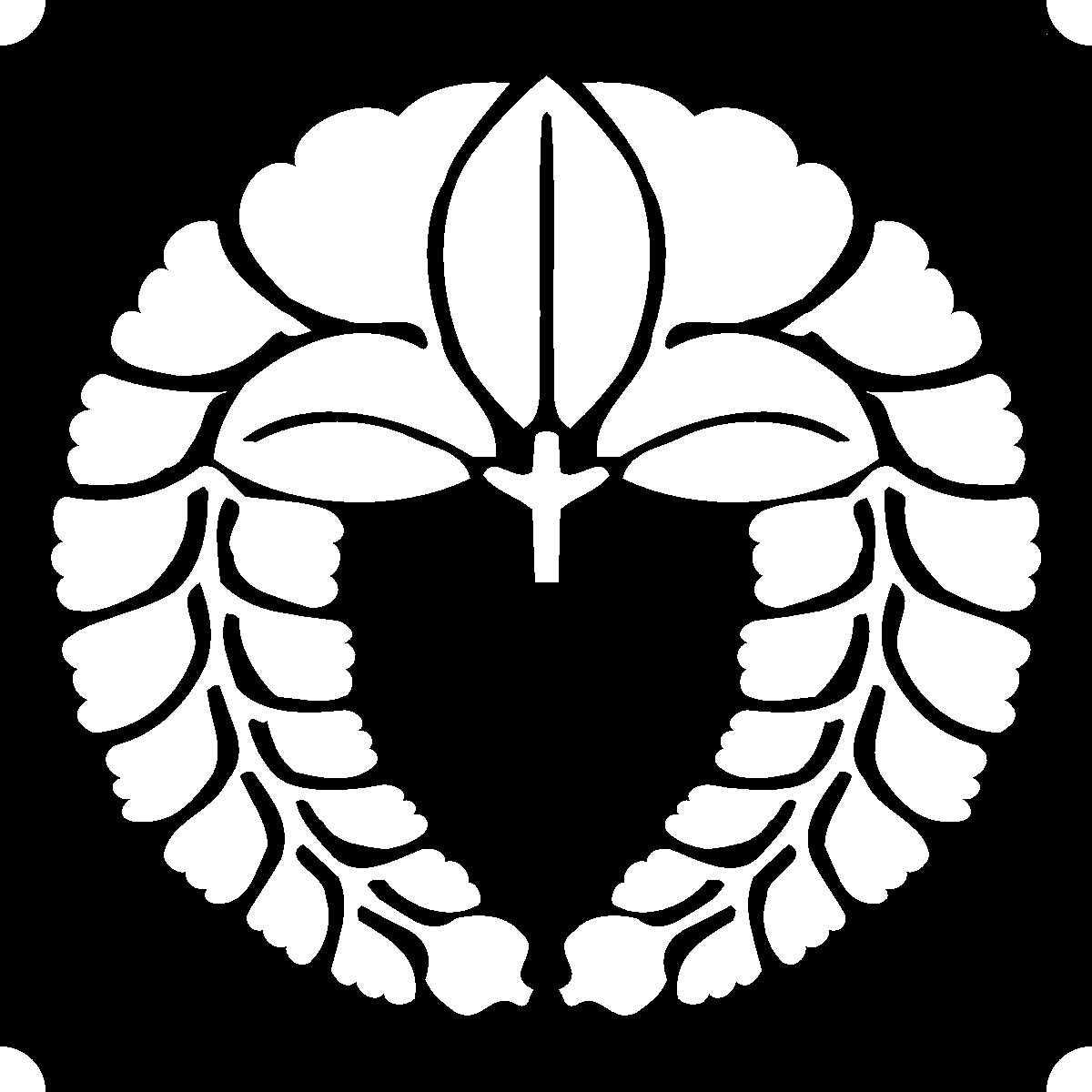

- Domain: Yunagaya
- Stipend: 10,000 koku
- Class: Fudai 5
- Headquarters: Municipal office
Family of daimyo, native of Mikawa and descended from Fujiwara Hidesato.
Younger branch, which from 1670 resided at Yunagaya.
Succession
- Yoshikiyo
- Kiyonaga
- Ienaga (1546-1600)
- Masanaga (1568-1634)
- Tadaoki
- Masasuke/Yorinao - 1st Naito daimyo of Yunagaya
- Masanori
- Masasada
- Masaatsu
- Masanobu
- Sadayoshi
- Masahiro (unranked)
- Masayuki
- Masaakira
- Masatami
- Masatsune
- Masatoshi
- Masayasu
Notable Ancestors
.jpg)
Served Ieyasu, who in 1590, gave him the fief of Sanuki (Kazusa -- 20,000
koku). Charged with the guard of the castle of Fushima, he killed himself
rather than surrender.
-
Naito
Masanaga (1568-1634)
For his services at the siege of Osaka (1615), saw his revenues raised to
50,000 koku, was then, in 1622, transferred to Iwakidaira (Mutsu -- 70,000 koku).
Related Branches
- Eldest branch: Nobeoka (Hyuga -- 70,000 koku)
- Branch: Koromo (Mikawa -- 20,000 koku)
- Branch: Murakami (Echigo -- 50,000 koku)
- Branch: Takato (Shinano -- 33,000 koku)
- Branch: Iwamurata (Shinano -- 15,000 koku)
- Branch: Toba (Shima -- 32,000 koku)
Sources
Matsudaira (Mito)
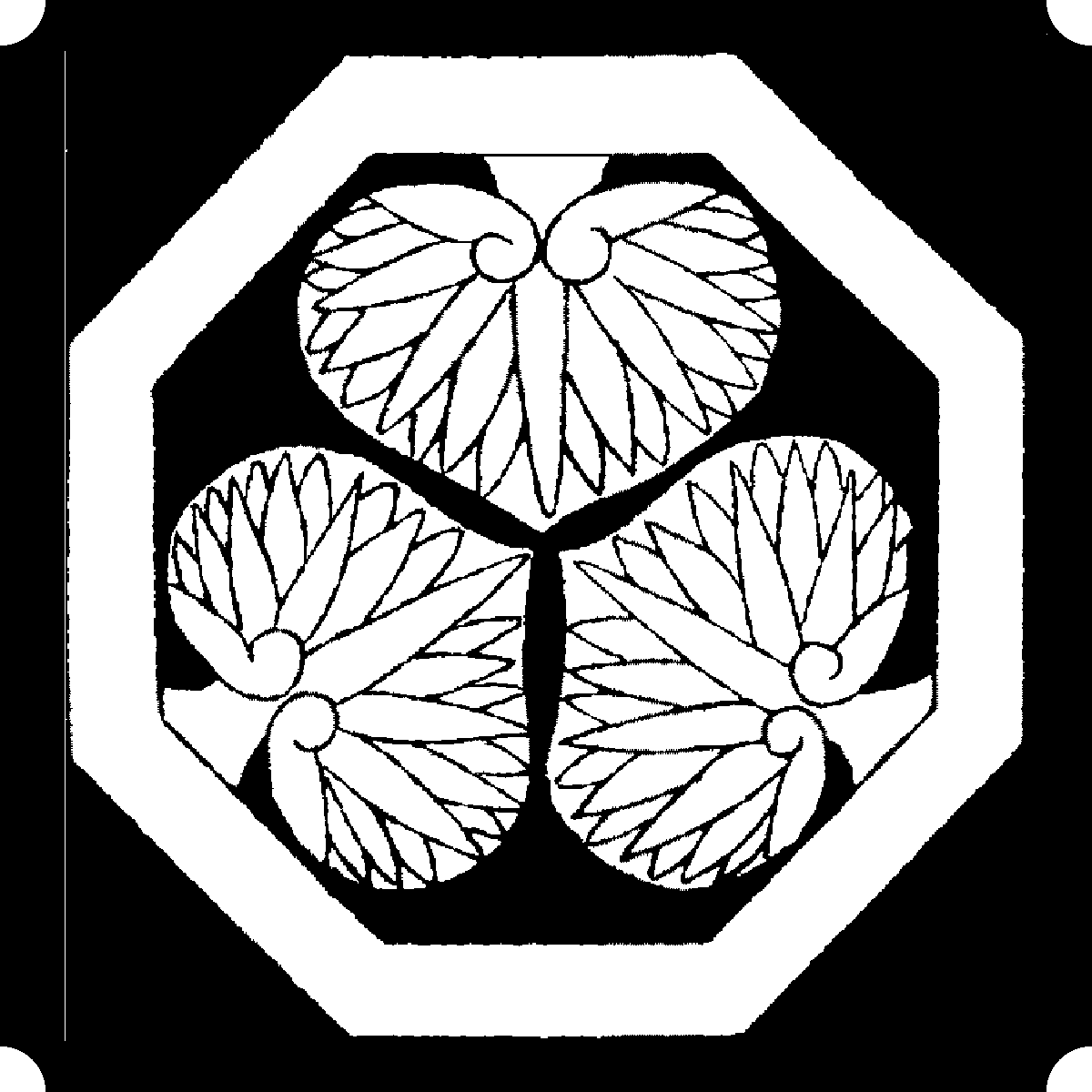

- Domain: Moriyama
- Stipend: 20,000 koku
- Class: Shinpan 4
- Headquarters: Municipal office
Branch issued from Yorimoto, son of Yorifusa (Mito) and grandson of Ieyasu.
Since 1700, it resided at Morikawa.
Succession
- Tokugawa Ieyasu (1543-1616)
- Tokugawa Yorifusa (1603-1661)
- Yorimoto - 1st Matsudaira daimyo of Moriyama (1661-1693)
- Yorisada (daimyo 1693-1744)
- Yorihiro (daimyo 1738-1763)
- Yoriakira (daimyo 1763-1801)
- Yoriyoshi (daimyo 1801-1830)
- Yorinobu (daimyo 1830-1862)
- Yorinori (daimyo 1862-1869)
- Yoriyuki (daimyo 1869-1871)
Related Branches
- Branch of Yorishige: Takamatsu (Sanuki -- 120,000 koku)
- Branch of Yoritaka: Fuchu (Hitachi -- 20,000 koku)
- Branch of Yorio: Shishido (Hitachi -- 10,000 koku)
Sources
Honda
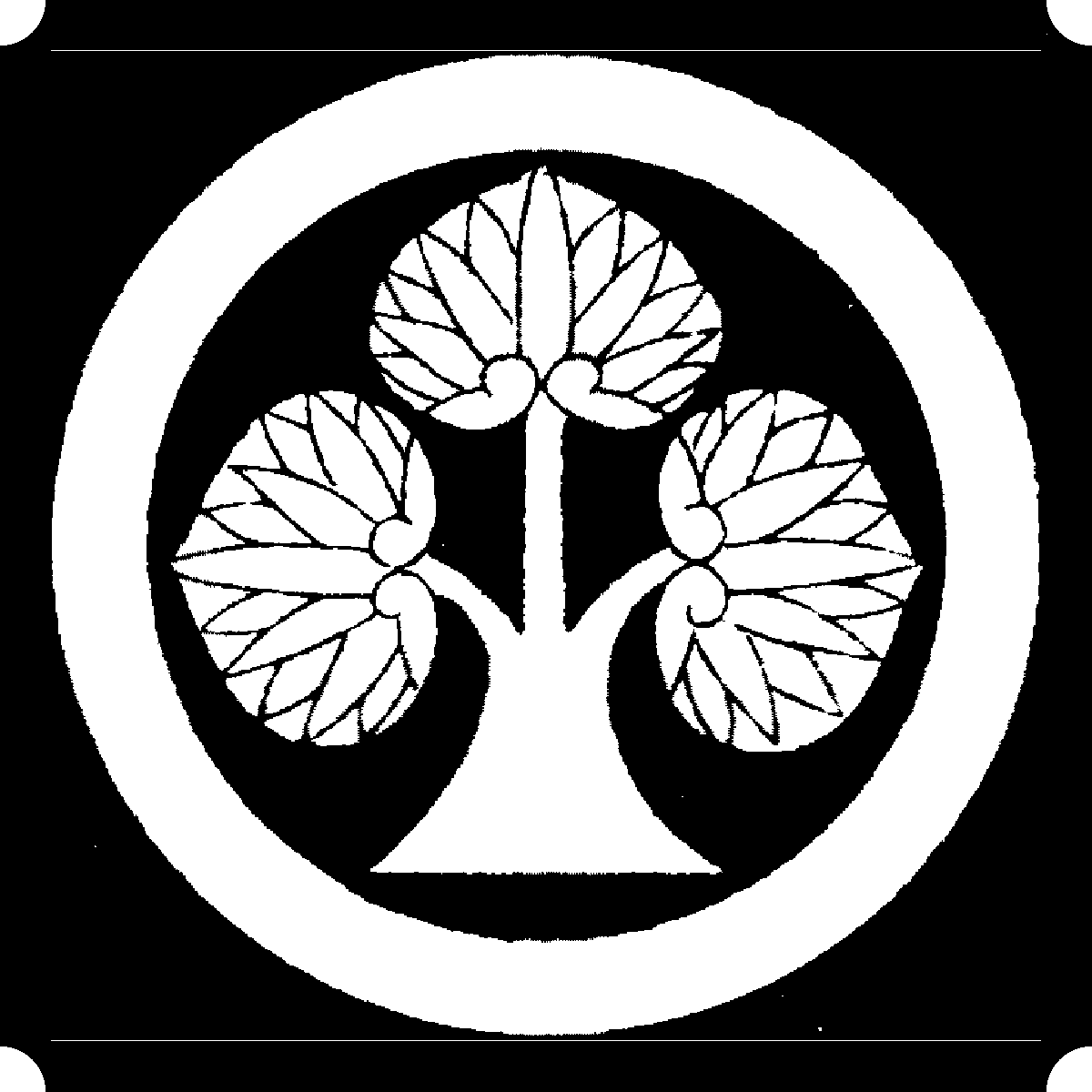

- Domain: Izumi
- Stipend: 20,000 koku
- Class: Fudai 5
- Headquarters: Izumi Castle
Daimyo family originating in Mikawa, and descended from Fujiwara
Kanemichi (925-977).
Branch which from 1746 resided at Izumi.
Succession
- Tadakatsu (1548-1610)
- Tadamasa
- Tadayoshi
- Tadaharu - 1 Honda daimyo of Sagara (Totomi -- 15,000 koku)
- Tadamichi
- Tadayuki - 3rd Honda daimyo of Sagara; 1st Honda daimyo of Izumi
- Tadakazu
- Tadashige
- Tadatomo
- Tadanori
- Tadatoshi
- Tadanobu
Notable Ancestors
-
Honda
Tadakatsu (1548-1610)
.jpg)
Was a companion of Ieyau in all his campaigns. In 1590, when the latter received
Kanto as a fief, he nominated Tadakatsu daimyo of Otaki (Kazusa --
100,000 koku), and, after Sekigahara (1600) transferred him to Kuwana (Ise --
150,000 koku).
Related Branches
- Elder branch: Himeji (Harima -- 250,000 koku)
- Branch: Okazaki (Mikawa -- 50,000 koku)
- Younger branch: Yamasaki (Harima -- 10,000 koku)
Sources
|
